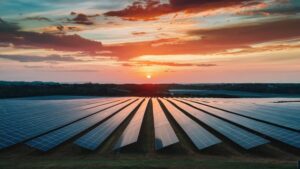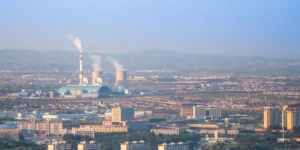MicroQuanta Unveils World’s Largest Perovskite PV Plant

Dec 10, 2024 09:42 AM ET
- MicroQuanta’s groundbreaking 8.6 MW perovskite solar plant in Lishui merges clean energy and agriculture, setting a new global standard for sustainable innovation.

MicroQuanta has successfully connected an 8.6 MW perovskite solar PV plant to the grid in Lishui, Zhejiang province, marking it as the world’s largest perovskite-based facility. Designed for agrivoltaics, the installation comprises 95,648 MicroQuanta α perovskite modules, each measuring 1,245 mm x 635 mm and elevated 2 meters to allow for agricultural use beneath the solar arrays.
The plant is tailored to the region’s climatic conditions, optimizing energy production while supporting agriculture. MicroQuanta claims that its perovskite modules excel compared to traditional PERC panels, particularly in low-light scenarios. Additionally, the modules have received stability certification from IEC and VDE.
What innovations make MicroQuanta’s perovskite solar plant a game changer for agrivoltaics?
MicroQuanta’s 8.6 MW perovskite solar plant is not just notable for its size, but it also embodies several innovative advancements that make it a game changer for the agrivoltaics sector. Here are some of the key innovations:
Perovskite Technology:
- Perovskite solar cells are known for their high efficiency and lower production costs compared to traditional silicon-based solar cells. This leads to a more affordable energy solution that can significantly benefit agrivoltaic systems.
Enhanced Performance in Low Light:
- The perovskite modules used in this plant demonstrate superior performance in low-light conditions, such as cloudy days or early mornings. This characteristic ensures a more consistent energy output, making it well-suited for agricultural regions that experience variable weather.
Agricultural Integration:
- With the design allowing for crops to be grown underneath the solar installation, the plant promotes dual land use, maximizing productivity and enhancing food security. Elevating the solar panels also mitigates shading, which can be detrimental to crop growth.
Modular Design:
- The MicroQuanta α perovskite modules are designed for ease of installation and scalability. This modularity can facilitate rapid deployment in various agricultural settings without drastically altering existing land uses.
Adaptation to Local Climate:
- The plant is specifically designed to optimize performance based on the local climatic conditions of Lishui, Zhejiang province. This level of customization helps in achieving higher energy yields tailored to the environment.
Stability Certification:
- Achieving stability certification from internationally recognized bodies like the IEC and VDE ensures that these perovskite modules can withstand environmental stressors over time, fostering confidence among investors and stakeholders in the longevity of the technology.
Circular Economy Practices:
- Perovskite technology is still evolving, but there is potential for future developments focusing on recycling and reusing materials. This aligns with sustainable practices in agrivoltaics, promoting a circular economy within the solar energy sector.
Cost-Effective Production:
- The manufacturing process of perovskite solar cells is generally less resource-intensive compared to traditional solar panels. This lower cost base can lead to reduced prices for end-users, opening up agrivoltaic systems to a wider audience.
Reduction of Carbon Footprint:
- By integrating renewable energy generation with agricultural practices, the technology significantly reduces the carbon footprint of farming operations, contributing to a more sustainable agricultural system.
Potential for Hybrid Systems:
- MicroQuanta’s innovative approach paves the way for hybrid systems that can incorporate additional energy generation methods, such as wind or bioenergy, thus diversifying the energy supply for agricultural operations.
These innovations not only enhance the viability of agrivoltaics but also set a precedent for future renewable energy projects that seek to harmonize energy production with agricultural practices, ultimately fostering more resilient farming systems.

SOLAR DIRECTORY
Solar Installers, Manufacturers




